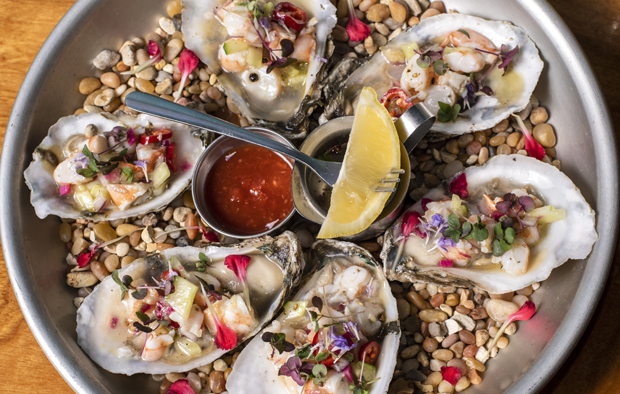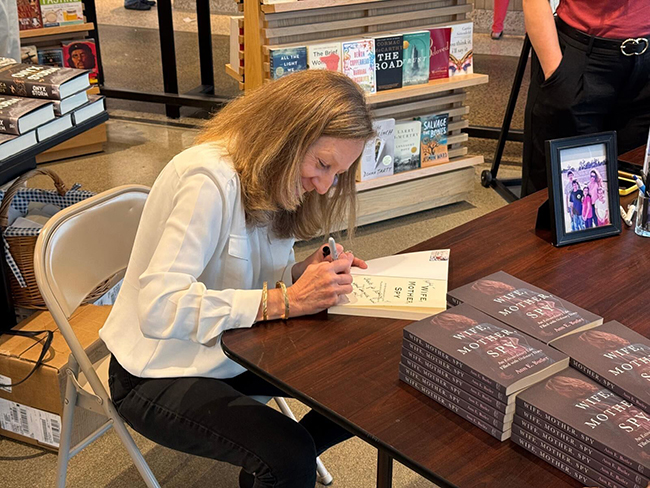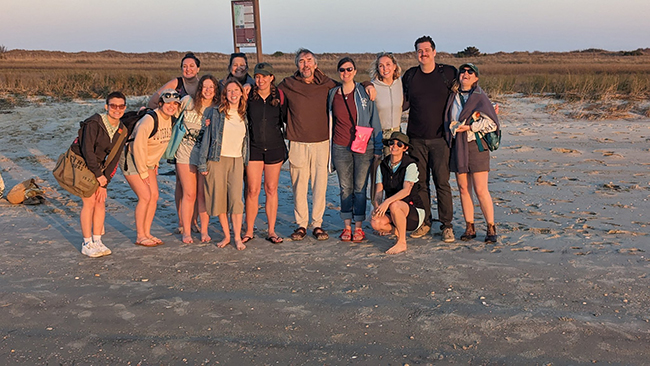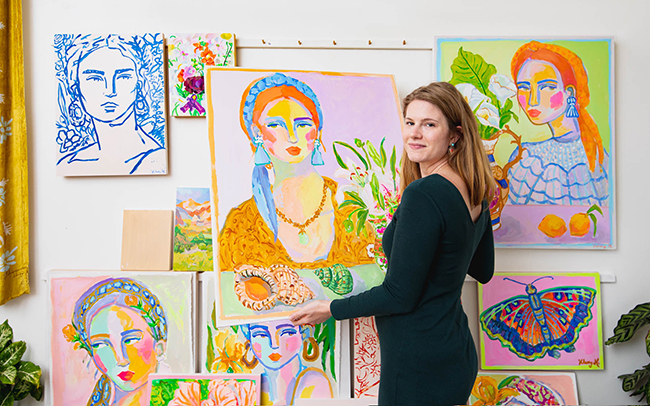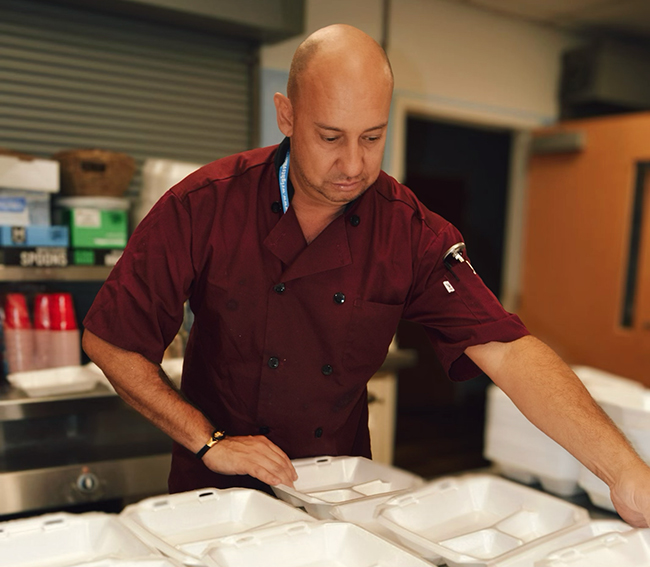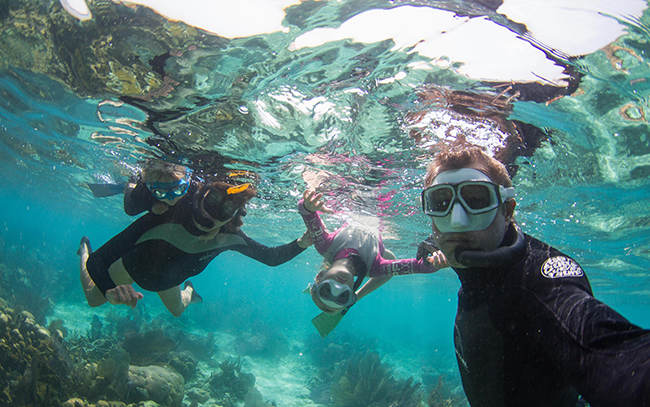When the World is Your Oyster
11 Jan 2020
Fisherman Ana Shellem shares her inspiring outside-of-the-shell story
By FANNY SLATER
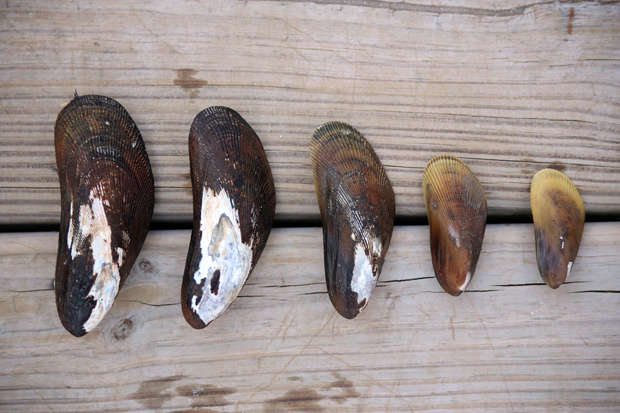
From New York bartending to boutique shellfishing, Ana Shellem is no stranger to all-things wild. After a prolonged period in the restaurant world, this spunky, enthusiastic outdoorswoman decided that, while she was a pro at mixing drinks and managing the nightlife scene—it was the muddy marshes that made her heart sing. She traded in her whiskey shaker for waders and life has been sweet ever since. With just three years in the industry under her belt, Ana has already collected chefs all over North Carolina who can’t get enough of her divinely delicious, hand-harvested oysters, clams, and mussels.
Not to mention craft breweries like Free Range in Charlotte who plopped her products into their rich, roasty Carolina Oyster Stout this past year.
Sure, the last name Shellem doesn’t hurt when you’re in the seafood-shucking game—but it’s Ana’s charm and thoughtful, unwavering devotion to her craft that have skyrocketed her success. I had the pleasure of picking her brain and we dug deep into her daily rituals, the future of shellfishing, and what makes her “tide to table” business such a treasure.
People must always be curious to hear more about your story. What question are you tired of answering?
“So, your husband doesn’t do the shellfishing with you?”
Everyone assumes that I do the sales or design, and that Jon does the “work.” Nope! It’s just me!
Jon did get you interested in shellfishing though, right? Those must have been some interesting
first dates!
When we first started dating, that was just what we did! We’d go fin fishing or shell fishing. I just loved the marsh, and I could stay out there for hours and hours. It was therapeutic, and then we’d go home and cook dinner together, and that part was romantic.
During all those years managing bars and restaurants, did you ever have an interest in the culinary side? Looking back—what was that experience like?
I started as a bus girl when I was sixteen in Kentucky, and then in New York, I was working for a woman named Melba. That’s where really started to fall in love with bartending and being in the service industry. When I moved to Wilmington, I continued bartending and running cocktail bars and had a great time. I was working really hard, but it wasn’t fulfilling me even though I gave it my all.
I loved watching the back of the house, but I was happy with the money I was making in the front. I’ve always been into cooking, though. It’s another form of therapy for me. Fishing and cooking are my two favorite things to do.
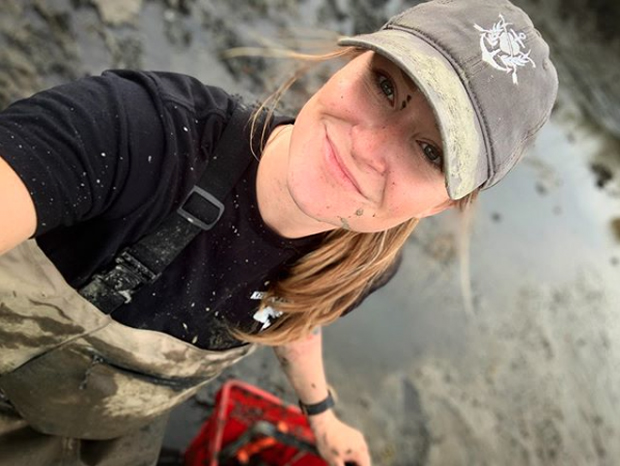
Do you think that working in the restaurant industry is what encouraged selling your products directly to chefs?
I always bonded with the back of the house and the whole culture of the restaurant industry. That’s definitely why I wanted to work directly with restaurants because I could see what the chefs were doing with what I had harvested. It’s really inspiring to me, and the caliber of chefs I get to work with is incredible.
What was it like when you first shifted career paths?
When I wanted to leave bartending, Jon asked what made me happy—and the marsh truly does—he reminded me to figure things out the right way. It’s hard money, a lot of work, and there’s crazy weather and circumstances to deal with. But that’s why I became a fish dealer rather than a fisherman at first. I could work directly with whoever I wanted to do. I priced my own product, and I wasn’t delivering to a market. There wasn’t, and still isn’t, a middle man.
For entrepreneurs, there’s a moment when you decide to stop working for someone else and branch out and do that thing that’s in your heart. Tell me yours.
Eventually the service industry just felt toxic for me, and the moment I realized I felt stuck and like a caged animal—I decided it wasn’t worth it. It wasn’t worth the way I felt at the end of the day.
And ever since I made that decision, everything has fallen into place and showed me that working for myself was the right move.
How has connecting directly with chefs helped to grow your business?
Working with Keith Rhodes really plugged me in the Charlotte area. When he was on the show Order/Fire, he gave me the opportunity to deliver mussels for the episode which actually led onto my own episode two and a half years later! After his episode, though, those connections started pouring in. I had five instant accounts in Charlotte and I was like—this is my ticket!
Have your techniques grown and changed since you started (with newer technology or even advanced equipment) or do you stick with what you know?
I’ve had to change minor things over the years because of learning how to deal with Mother Nature. I was swimming for oysters for a while—but that was before it got too cold. It was crazy windy and hard to see!
I’m always educating myself so that I can perfect my craft and be the best I can. I also ask oyster farmers questions about what they’re doing, but it’s a very different game. I’m limited with closures, so we can only harvest October – March, whereas they can do it all year. I find farming fascinating, but I really want stick with just harvesting wild.
I plan on seeding the wild areas (and giving back is good for everybody!) this coming year.
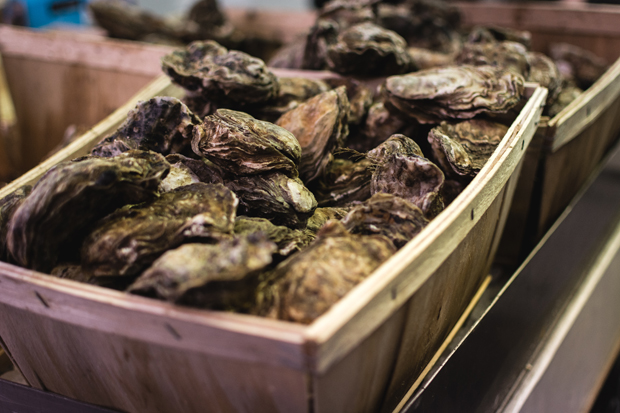
Since you harvest per order as opposed to for volume, how does that fluctuate your work schedule and keep the money flowing steadily?
It’s not about the money for me. If it was—I’d probably still be in the bartending business! But, as I’ve let it be about the passion and not about the money, it’s developed into something where people who have the same intense passion for their job want to work with me. That’s why some of the great chefs I work with came into play because they see that passion.
Everything I bring them is out of the water that day or the day before. It makes a huge difference—and it’s sustainable—because if I don’t have an order that day, I don’t go out.
What type of product requests do you get from the different chefs you work with?
I work with lots of chefs who appreciate wild oysters and don’t want the cookie-cutter products. They want the obscurities and they see that those imperfections can be delicious.
For example, when I harvest for Craig Love [of Surf House], I know he likes his mussels on the smaller side—like the Prince Edward Island variety—so I only look for those for him. And for my friend Melba in New York, she loves big mussels that are more pearly and less brown on
the outside.
Let’s go back to sustainability and how those practices have changed over the years. How are you helping to be part of that environmental consciousness?
Being more conscious is definitely a “trend” now, which I’m thankful for. For example, if I personally know that something is speared and not netted, it’s a benefit to all of us who work in the field because there’s longevity.
Sustainably, I maintain by harvesting per order. I never harvest for volume. If I did, I would worry that the product wouldn’t get handled properly or be refrigerated or even die. You never know whose hands something is going into. I don’t want to have an “eh, that’s good enough” mentality. I give heart and thought to everything I do and that effects the way the product is received and changes the excitement a chef has for putting it on the plate.
I was in the service industry for so long that it’s fun to bring oysters into a restaurant where I used to bartend!
Did you ever think you’d see that day?
No. Never, ever. I pinch myself because I thought I was going to be in New York bartending or still acting, but I’m so glad I listened to myself and took a risk. And having major hurricanes, like Florence my first year in business, was really hard. Shellfishing was closed for three months and because of the type of flood it was—people were afraid to eat shellfish. It was tough, but going through that made me even stronger.
How has the shellfishing industry changed since the few recent major hurricanes?
Clamming has changed drastically since Hurricane Florence, and honestly even after Dorian. There’s been a big shortage, and I’ve known many fisherman who have quit fishing and gone back to just dealing. I’m glad that clamming isn’t my only source, because if it was and I knew that they were dying out—I would want to protect them for the future.


